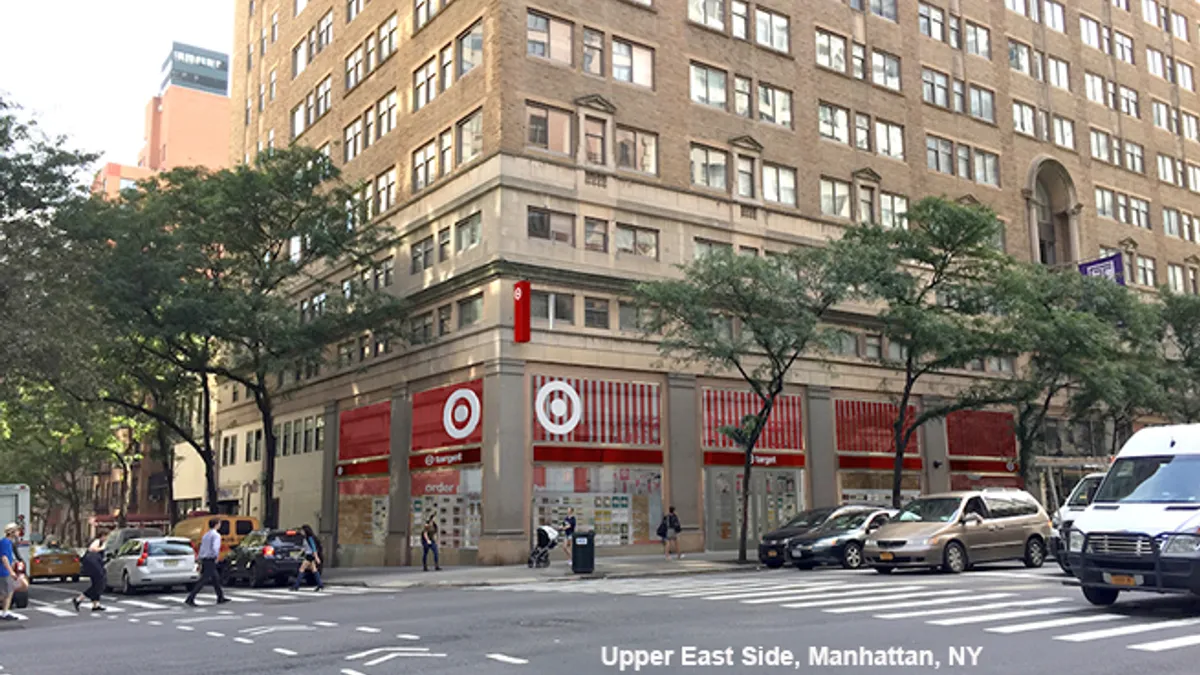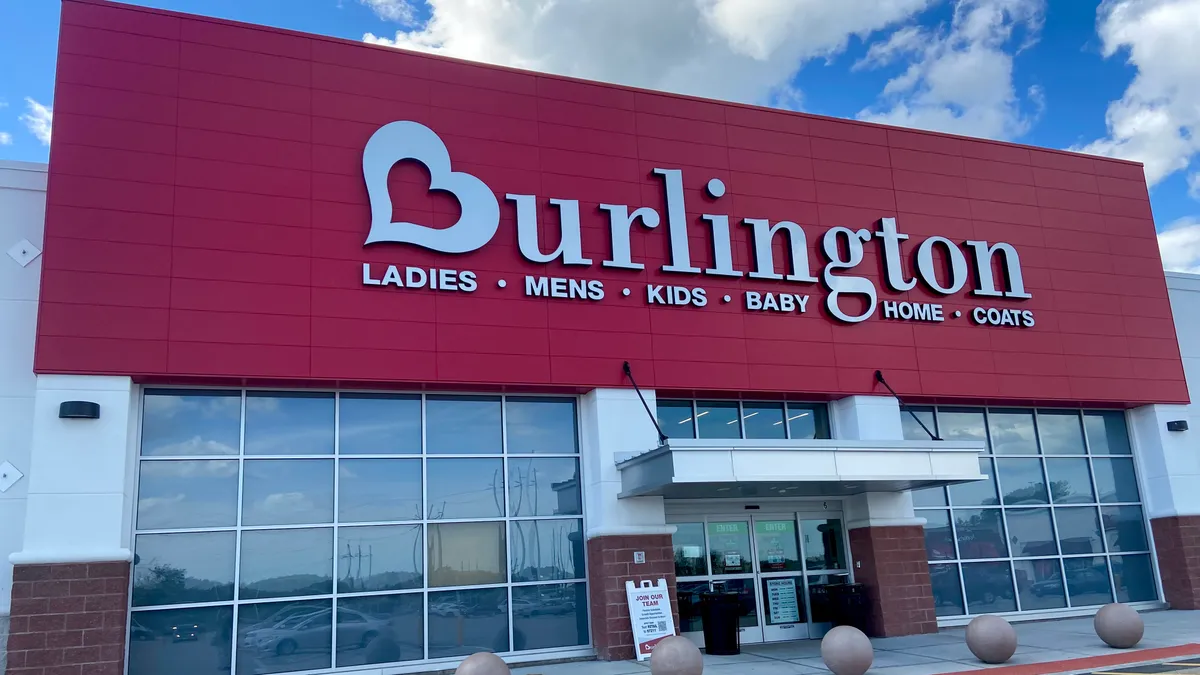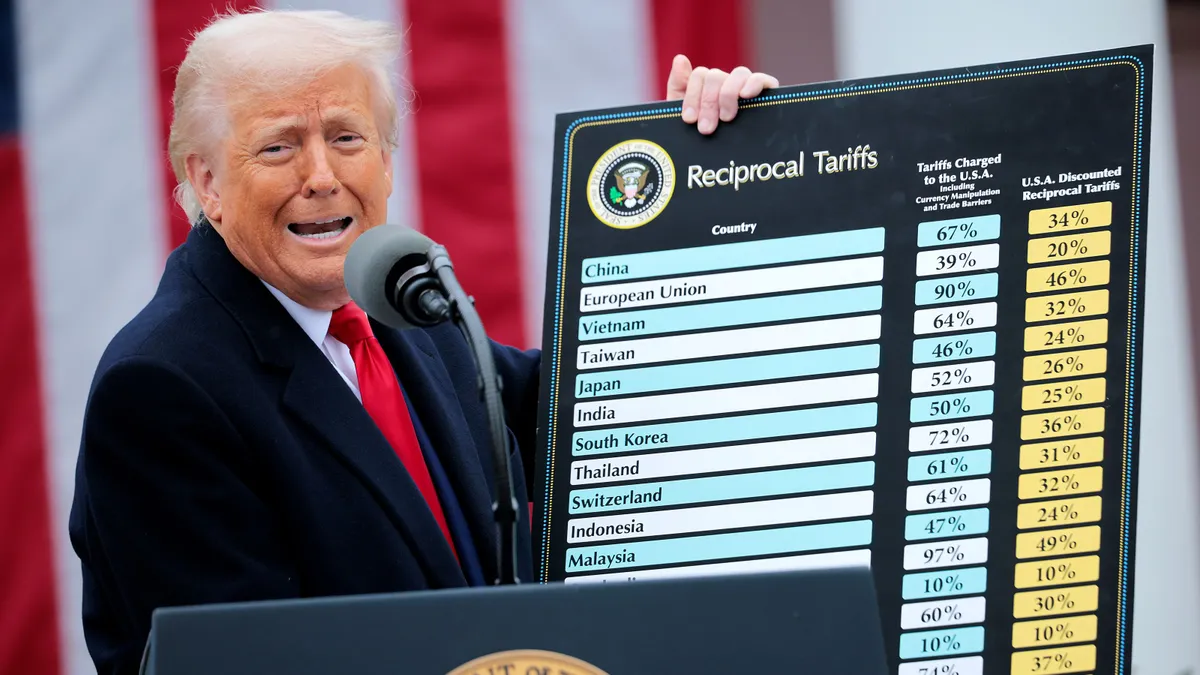Target executives have been bullish on store-centric e-commerce fulfillment for more than a year. In theory, the commitment to such a strategy is what retail analysts have been clamoring for — a dense store network is every national retailer's most significant advantage over Amazon.
But Target executives have met some skepticism from analysts and onlookers that the implementation would be depreciative for the store and online customer experience.
Executives have explained in presentations, interviews and earnings calls that operational innovations were coming, including redesigning store backrooms, retraining employees, changing replenishment strategies and building new technologies.
"We said physical was the answer to digital and knew it wouldn’t be easy for others to imagine. We’d have to put up the points to prove our case," COO John Mulligan said in an investor presentation Tuesday.
In that presentation, Target executives took their most comprehensive swing yet at explaining how store-based fulfillment works and why now is the right time to expand it.
A dedicated fulfillment operation
Target stores fulfill 80% of the retailer's digital sales volume, according to CEO Brian Cornell. Many of these orders don't require packing and shipping, as same-day pickup and drive-up options are Target's fastest-growing (and most profitable) fulfillment options. At 24% of total digital sales, same-day services brought fulfillment cost per unit down 25% for the retailer in 2019, Cornell said. CFO Michael Fiddelke said he expects this share to rise.
But digital sales that require a box, a shipping label and a carrier pickup are growing too and the space needed for the operation has in part driven the skepticism around Target's store obsession.
Videos of Target stores from the presentation Tuesday show packing and shipping stations with conveyors to transport packed parcels to trucks. Team members described dedicated pickers, preppers (who prepare items coming off the sales floor for shipment) and packers. Pickers have a cart and handheld digital tools to make picking simple, according to the video.
If Target is able to tackle the physical challenges of in-store picking and packing, the next concern is what such an operation will do to the shelves.
"We’re using machine learning to predict what product we’ll need and where we’ll need it," Mulligan said, boasting that the technology dropped stockouts and backroom inventory by more than a third in 2019.
Replenishment skips the backroom
After the data-driven inventory allocation system gives the orders, a robotics program developed in a Minneapolis warehouse over several years will kick in.
The robotics system sorts millions of individual units into boxes assigned to a store aisle so team members in stores can unpack directly onto the shelf — skipping the backroom entirely.
A video narrated by Senior Director of Supply Chain Randy Wilburn showed warehouse workers placing individual items onto belts that feed elevator-like robots that transport the items to the correct box within a vertical grid of more than 40 boxes — all representing aisles in a specific store.
"In our legacy break-pack solution, the deliverable to our stores requires that they resort all of the product multiple times. So the new solution allows us to make it easier for our Stores Team to unload," Wilburn said in the video. And Mulligan said the system is now ready to start scaling across Target fulfillment centers.
Packed boxes will be fed into a second robotic system that organizes the boxes into truckloads and optimizes the packing of the truck at the warehouse for easier and faster unloading when it reaches the store.
"When those two solutions work together, it will revolutionize how our store teams receive inventory and get the products our guests want on the shelf as quickly as possible," Mulligan said.
Scaling up — is it worth it?
The robotic system for replenishment packing will support hundreds of stores by this summer. The robotic system that sorts packed boxes is currently in use in Target's Perth Amboy, New Jersey, fulfillment center and will launch in a second facility soon. Mulligan said this is the year that these disparate R&D projects come together and scale.
"Inventory positioning will be even more precise, replenishment will be even faster, our backroom inventory levels will keep declining and out of stocks will continue to improve," said Mulligan, who described the technologies as the "foundation" of the Target's fulfillment future with iterations still to come.
Of course, all of this comes at a cost. Fiddelke explained fulfillment expense is incremental — meaning there is no point where costs stop rising with volume, as there is for in-store purchases. The cost of store refurbishments to enable store-based fulfillment has reached $4 billion over the last three years, but Cornell said it's all worth it to have "the most comprehensive set of fulfillment capabilities in the industry."






















